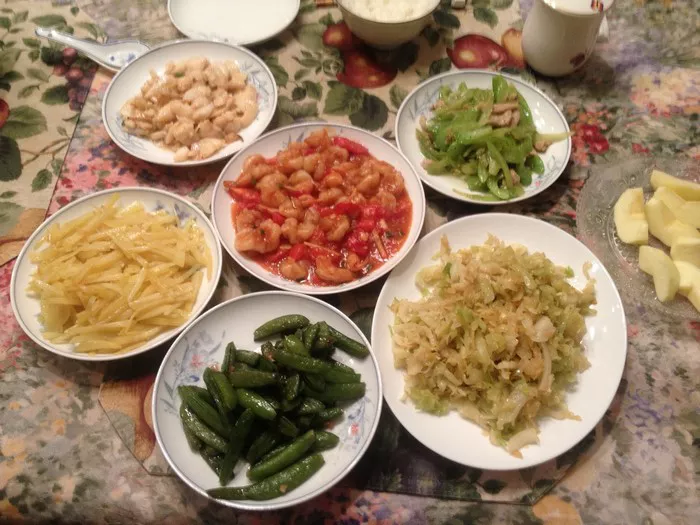Chinese cuisine is renowned for its rich flavors, diverse ingredients, and vibrant culinary traditions. While some Chinese dishes may be perceived as indulgent or high in calories, there are plenty of healthy options available that can be enjoyed without compromising your nutritional goals. In this article, we explore the components of a healthy Chinese meal, highlighting dishes that are both delicious and nourishing.
1. Emphasize Vegetables
One of the key aspects of a healthy Chinese meal is a generous portion of vegetables. Chinese cuisine offers a wide variety of vegetable-based dishes that are not only packed with essential nutrients but also bursting with flavor. Stir-fried vegetables, such as bok choy, snow peas, and broccoli, are popular choices that retain their crispness and nutritional value. Steamed or lightly sautéed greens, such as Chinese spinach or gai lan (Chinese broccoli), are excellent options as well. These dishes provide essential vitamins, minerals, and dietary fiber, promoting satiety and overall well-being.
2. Choose Lean Proteins
Protein is an essential component of a healthy meal, providing satiety, promoting muscle growth, and supporting various bodily functions. When selecting proteins in a Chinese meal, opt for lean sources to minimize saturated fat intake. Dishes featuring chicken, fish, tofu, or shrimp can provide ample protein without excess calories. Steamed or lightly stir-fried preparations are preferable to deep-fried options. For example, steamed fish with ginger and scallions or stir-fried chicken with vegetables can be flavorful and nutritious choices.
3. Be Mindful of Cooking Methods
The cooking methods used in Chinese cuisine play a significant role in determining the overall healthiness of a meal. Steaming and stir-frying are two cooking techniques that retain the natural flavors and nutrients of the ingredients while minimizing the need for excessive oil. Steamed dishes, such as steamed fish or vegetables, preserve the integrity of the ingredients and are a healthier alternative to fried or sautéed options. Stir-frying, when done with minimal oil and for a short duration, allows the vegetables and proteins to retain their crispness and nutritional value.
4. Choose Whole Grains
In a healthy Chinese meal, it is important to include wholesome carbohydrates that provide sustained energy and essential nutrients. Opt for whole grain options such as brown rice or whole wheat noodles instead of refined grains like white rice or regular noodles. Whole grains are rich in fiber, vitamins, and minerals, and they have a lower glycemic index, which helps regulate blood sugar levels. Brown rice pairs well with a variety of stir-fried or steamed dishes and complements the flavors of the meal.
5. Use Herbs and Spices for Flavor
Chinese cuisine offers a wide range of herbs and spices that can enhance the flavors of a dish without relying heavily on added salt, sugar, or unhealthy sauces. Traditional Chinese herbs and spices, such as ginger, garlic, scallions, star anise, and Sichuan peppercorns, provide depth and complexity to the flavors. These ingredients also boast various health benefits, including anti-inflammatory properties and aiding digestion. By incorporating these herbs and spices into your meals, you can elevate the taste while minimizing the need for excessive sodium or unhealthy condiments.
6. Be Mindful of Sauce Choices
Sauces can add flavor and depth to Chinese dishes but can also be a significant source of added sodium, sugar, and unhealthy fats. Opt for dishes with lighter sauces, such as garlic sauce or oyster sauce, that are lower in calories and sodium compared to heavier sauces like sweet and sour or General Tso’s. It’s also helpful to request sauces on the side, allowing you to control the amount you consume. By being mindful of sauce choices and using them sparingly, you can enjoy the flavors without compromising the healthiness of the meal.
7. Enjoy Traditional Chinese Soups
Chinese cuisine boasts a variety of soups that are not only comforting but also nutritious. Traditional soups such as hot and sour soup, egg drop soup, or winter melon soup can be excellent choices. These soups often feature a combination of vegetables, lean proteins, and flavorful broth. They provide hydration, essential nutrients, and a feeling of satiety without excessive calories. Be mindful of portion sizes and choose soups with clear broths rather than creamy or thickened varieties.
Conclusion
When it comes to enjoying a healthy Chinese meal, the key lies in balance, mindfulness, and choosing nutrient-dense options. Emphasize vegetables, lean proteins, and whole grains while being mindful of cooking methods and sauce choices. By incorporating traditional herbs and spices, you can elevate the flavors while reducing reliance on unhealthy condiments. A well-rounded Chinese meal can offer a symphony of tastes, textures, and nutritional benefits, allowing you to savor the delights of Chinese cuisine without compromising your health and well-being.























